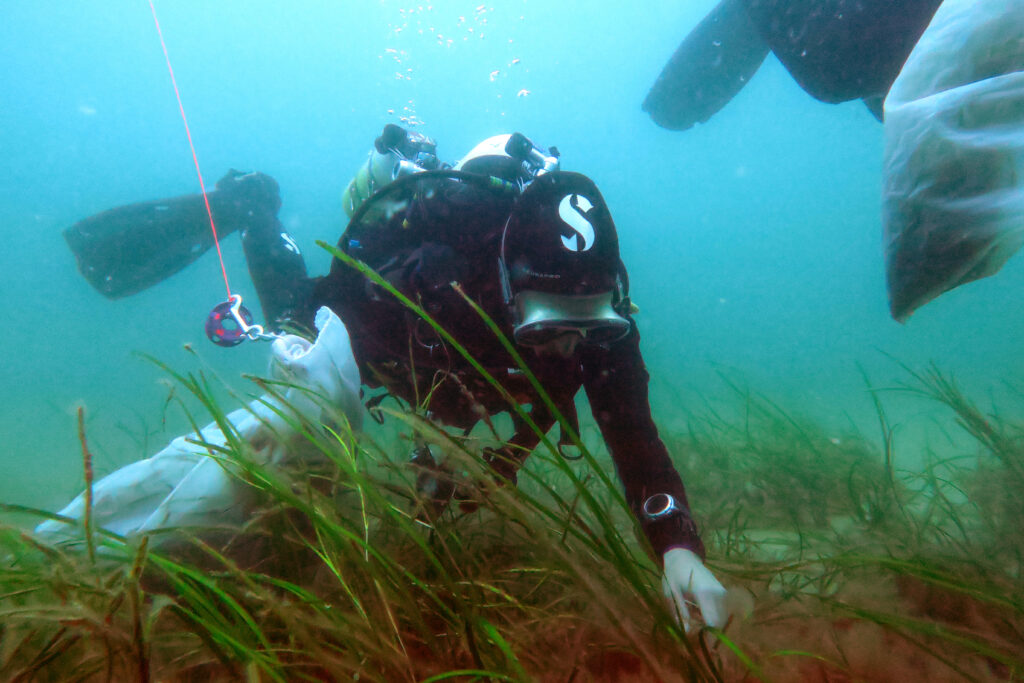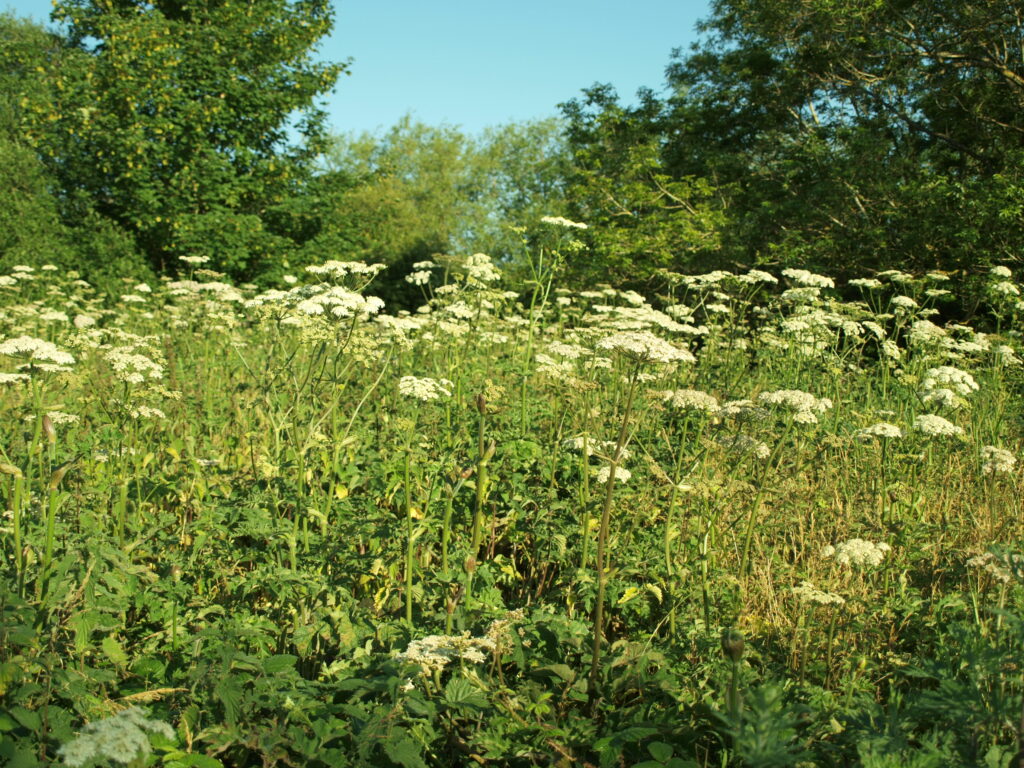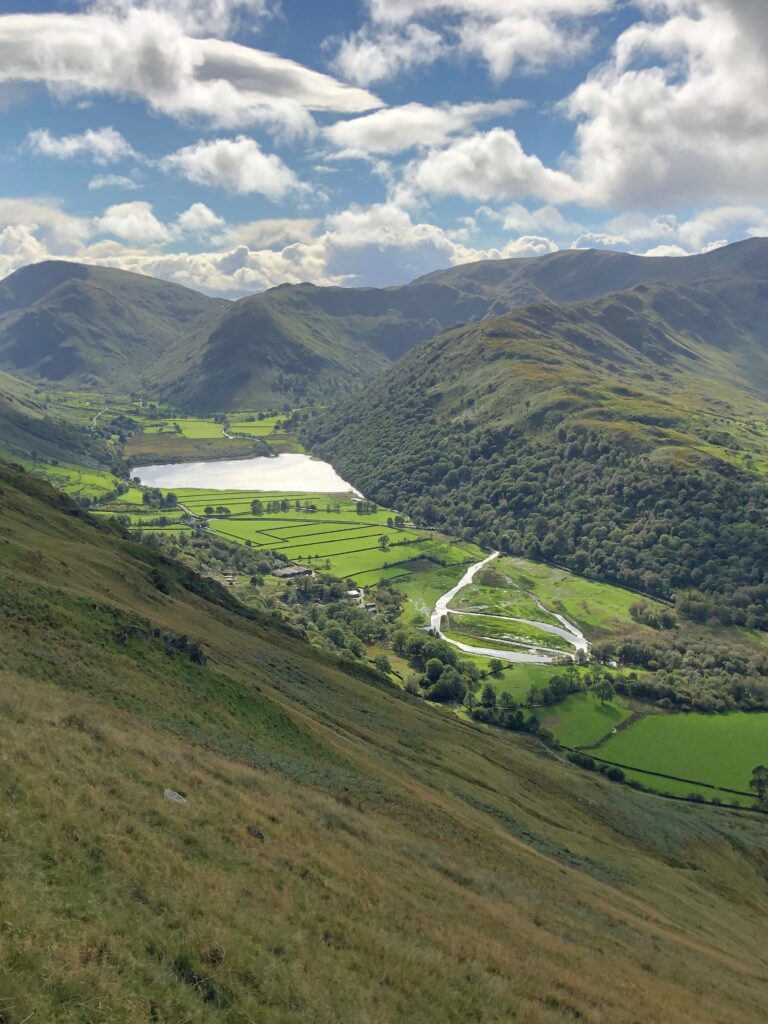Soon to hit our readers’ doormats, the Summer 2023 issue of Conservation Land Management (CLM) is filled with a mix of informative and practical articles. Excitingly, this issue delves into the marine world with a look at seagrass restoration approaches in southern England. Other articles include river restoration in the Ullswater Valley in Cumbria, the management of problem umbellifers and the conservation of the European Turtle Dove. Read a summary of the articles and other features in this issue below.

More than 90% of the UK’s seagrass has been lost over the past few centuries, driven by disease, pollution and physical damage to the seabed caused by trawling and other fishing methods. To halt and reverse this trend, several projects during recent years have sought to restore seagrass meadows where they are no longer present. One of these, supported by the ReMEDIES partnership, is focusing on five Special Areas of Conservation (SACs): Isles of Scilly Complex, Essex Estuaries, Fal and Helford, Plymouth Sound and Estuaries, and Solent Maritime. The Ocean Conservation Trust is leading the work in Plymouth Sound and Solent Maritime, and in this article, Esther Farrant details the various methods being trialled to cultivate and plant seagrass seeds and seedlings to restore seagrass meadows in southern England. In addition to planting, one other important aspect of seagrass recovery is to prevent further damage to existing seagrass meadows, and so Advanced Mooring Systems (AMS) have been designed as an alternative to traditional swing moorings, the chains of which can drag along the seafloor – Esther describes the design and installation of AMS in Plymouth Sound and Solent Maritime and explains why these are a less damaging option.

There are around 70 umbellifer species, both native and non-native, in the UK. A family of mostly herbaceous plants, umbellifers provide many benefits for wildlife, particularly invertebrates, but some species can pose a risk to people and livestock in certain situations. Robert Mitchell and Max Wade highlight the most troublesome species – such as Giant Hogweed and Hemlock – that land managers should be aware of, and describe their identification and the problems that these plants can cause, including biodiversity loss and phytophotodermatitis, which commonly appears as ‘strimmer’s rash’. The authors also cover the different treatment options available to manage these plants, and provide examples of control programmes that dealt with different species of umbellifers that posed a risk at two different sites.

The European Turtle Dove has experienced a dramatic decline in the UK and elsewhere in Europe, leading to the launch in 2018 of the International Species Action Plan for the Turtle Dove. This identified four conservation objectives: maintain and increase good quality breeding habitat, eradicate illegal killing in Europe, ensure that hunting levels do not exceed sustainable levels, and maintain and increase good quality habitats at migratory stopover sites and wintering grounds. Operation Turtle Dove, a partnership between the RSPB, Pensthorpe Conservation Trust and Natural England, works with landowners and farmers to deliver suitable feeding and nesting habitats for the Turtle Dove in the UK. In this article, Rick Bayne, Guy Anderson and Jos Ashpole describe the actions landowners can take to achieve this aim, including sowing bespoke seed mixtures as supplementary feed, providing an accessible drinking source and maintaining a dense vegetation structure for suitable breeding habitats.

Rivers as we know them in the UK are the result of modification by humans over time. Images of neat and straightened single-thread channels are usually what spring to mind, but, if left untamed, rivers would naturally consist of multiple channels weaving their way through wet woodlands and floodplains. Restoring rivers to achieve this more dynamic system can sometimes be met with hesitation by landowners, however, especially when the end result is uncertain. Riverlands, a partnership between the National Trust and the Environment Agency, has delivered two large-scale restoration projects in the Ullswater Valley in Cumbria keeping the sensitivity of the farmed landscape in mind, and in this article Rebecca Powell explains the approaches used in both of these projects and what the impact has been on the river habitats post-restoration.
In response to the articles on weir and dam removal from rivers and the restoration of ghost ponds in the Spring 2023 issue, Review includes a letter from one of our readers offering an insight into the cultural value of these features and the risk of damaging a registered heritage asset. In this and every issue you can also expect to see Briefing, keeping you up to date with the latest training courses, events and publications, and On the ground which provides helpful tips or updates on products relevant to land management.

CLM is published four times a year, in March, June, September and December, and is available by subscription only, delivered straight to your door. Subscriptions start from £22 per year. If you would like to read any of these articles, back issues are also available to purchase individually (subject to availability).
If you are involved in a conservation project and think your experiences could be useful to other practitioners, we would love to hear from you. Feel free to contact us if you are interested in writing for CLM – we will be happy to discuss your ideas with you.






